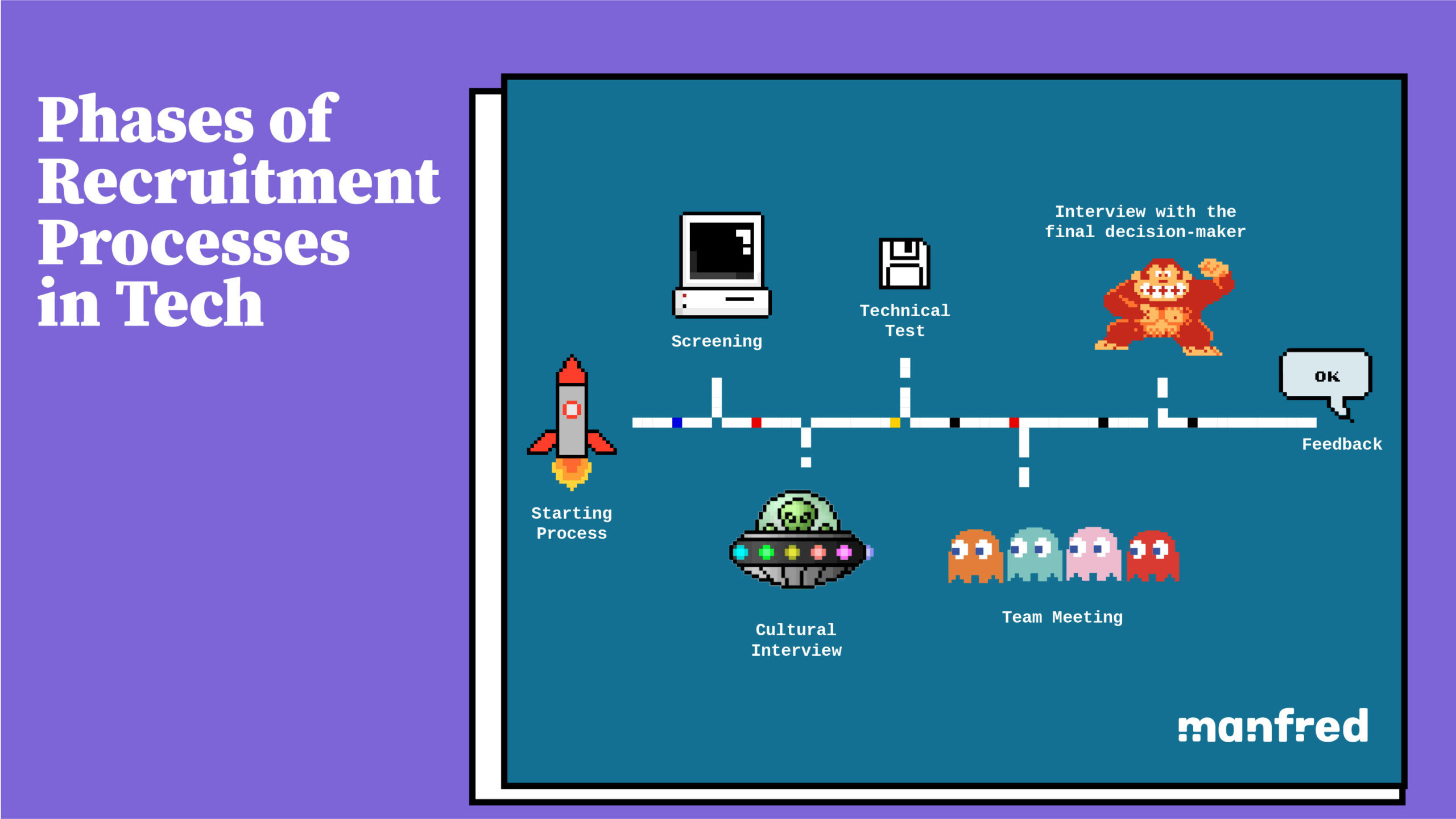Steps of the Tech Recruitment and Selection Process

No two selection processes are the same. They can be quite different depending on the industry and the size of the company. However at Manfred, we know first-hand that the recruitment and selection process in the Tech world have certain characteristics that make it different: conditioned by the high demand for technical talent, compared to the low supply of profiles interested in change.
The context
Due to the added layer of technical complexity and the current market situation, the recruitment and selection process of technical profiles present some unique characteristics. Faced with the urgency companies have to hire, candidates ask to have the maximum information asap. So companies need to move faster, adapting their processes to the preferences of the in-demand talent, and selling themselves to candidates (rather than the other way around). Candidates hold the power: they have the luxury of choosing where they will take the next step in their careers.
Time: a key factor in the process
We like to work with data to get the most realistic picture possible: Our track record tells us that the average time from the moment we activate the job offer to the moment the candidate accepts the offer is 39 days in total. According to other industry data, the process can take between 60 and 65 working days. Logically, this time frame varies the more stages and stakeholders are involved in the decision-making process.
The different stages of the recruitment and selection process
After reviewing several of the processes carried out at Manfred, our conclusion is that each selection process is different, to the point that in order to be able to specify it freely, we have set up a specific selection process section in our job offers to be able to personalize it as much as possible for each case.
However in general terms, recruitment and selection processes are divided into three key moments for the candidate:
- First cultural interview
- Technical test
- Interview with the final decision-maker
It can be extended or consist of different phases depending on the company.
Screening
In this first step, the company will review the CVs received, filtering those applications that fit the job offer and contacting the selected candidate profiles. It is a relatively quick phase, so it is critical that the CV reflects everything you are looking for and the technologies you would like to work with.
First Interview: the cultural match
This first face-to-face exchange is key. It is useful to identify if you fit in from a company culture point of view, and to find out all the details about how their team works.
Recorded presentations
Sometimes it may occur that some job offers receive a very high volume of applications. This is why we try to speed up the first step of filtering candidates during the screening process by recording their presentation in Hireflix and viewing it asynchronously. It is a valued practice in companies where communication and asynchronous working skills are valued for a first screening. Preparing not only those key points of your profile that you want to highlight, but also an orderly structure of what you would like to get across, will help to control nerves and the quality of the content that the interviewer will receive. Here you can find some recommendations to prepare for some possible interview questions.
Code tests
We could (and will) prepare a post just about types of code tests and their formats. In the meantime, HackerRank or Codewars can be useful to train you in these code tests. Code tests are a classic part of recruitment interviews. Some of them are live. Others you can be made at home without a deadline and asynchronously, in consideration for the extra effort in addition to your workweek. However best practice suggests that the important thing about the tests is to be able to share them with the engineering team and argue with your reasoning for how you have approached them. This will allow you to get to know your future team, as well as show how you think and the process you have followed to your future colleagues.
Team interviews
This is the perfect opportunity to get to know the team you will be working with, how they are organised, what the company culture is like, their background, responsibilities, internal processes, pretty much everything!
In some cases, these interviews are done as part of code testing. That is, the team is introduced to the candidate, and tests are reviewed together. In other companies, they are two different moments. Regardless, you should use this opportunity to gain as much knowledge as possible about your future team and to ask any questions you may have.
Interviews with the final manager
Depending on the size of the company, these interviews can be direct with the CEO or with the Tech Lead or the company's CTO. Whoever it is, it is a very good sign that you are so far along in the selection process. At this point, you should be clear about your future role, what you are going to do in the company, what will be expected of you, and what the financial proposal is. If not, now's the time to ask!
Final decision
Whatever the outcome of a recruitment process, you should always be notified with an explanation for the rejection of your application. It says a lot about a company and its culture to be able to include constructive feedback on the reasons why you may have been dismissed from the process. Don't be afraid to ask for it if you have not received it.
If you found all this information useful, we can help you to prepare for the interviews when using Manfred. JOIN US! 🖖🏽

